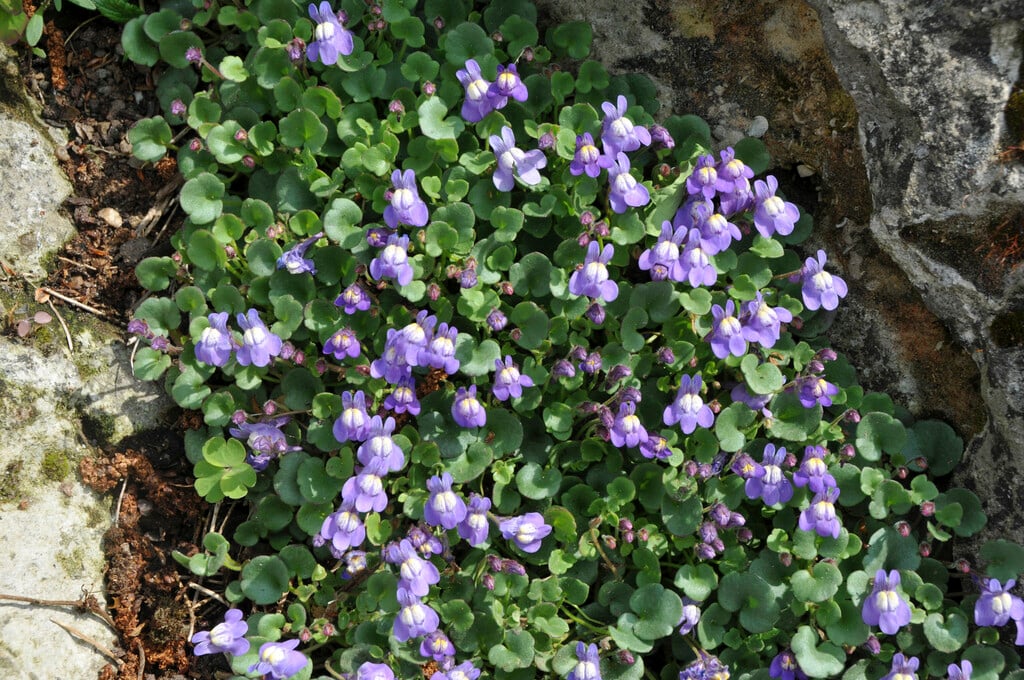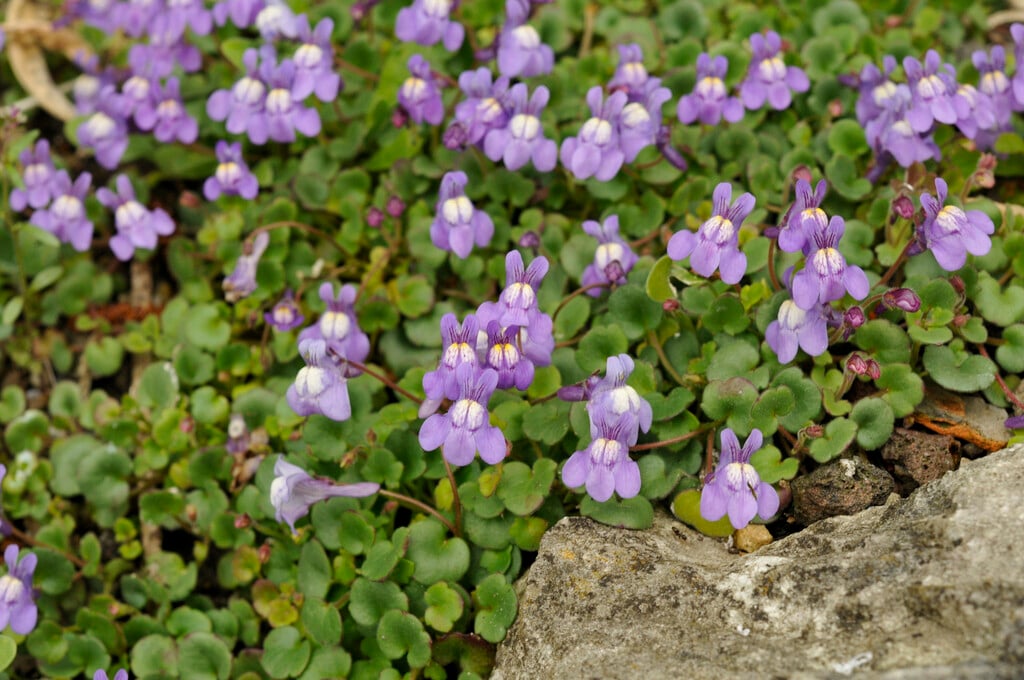Cymbalaria pallida
Italian toadflax
A mat-forming perennial with trailing stems and thick, downy, slightly lobed, kidney-shaped leaves. Small, light purple flowers, with long spurs and white centres with small yellow-orange markings, are produced in summer
Size
Ultimate height
Up to 10cmTime to ultimate height
2–5 yearsUltimate spread
0.1–0.5 metresGrowing conditions
Moisture
Well–drainedpH
Acid, Alkaline, NeutralColour & scent
| Stem | Flower | Foliage | Fruit | |
| Spring | Green | |||
|---|---|---|---|---|
| Summer | Purple | Green | ||
| Autumn | Green | |||
| Winter | Green |
Position
- Partial shade
Aspect
East–facing or North–facing or West–facing
Exposure
Exposed or Sheltered Hardiness
H4Botanical details
- Family
- Plantaginaceae
- Native to GB / Ireland
- No
- Foliage
- Semi evergreen
- Habit
- Matforming, Trailing
- Genus
Cymbalaria are low, creeping perennials with rounded, mostly lobed leaves and small, two-lipped, spurred flowers in shades of purple, or white
- Name status
Correct
How to grow
Cultivation
Grow in poor to moderate, well-drained soil in light or partial shade. Good for rock gardens, cracks in paving, or crevices in walls
Propagation
Propagate by seed, plants will often self-seed in place
Suggested planting locations and garden types
- Cottage and informal garden
- Patio and container plants
- Gravel garden
- Rock garden
- Ground cover
Pruning
No pruning required
Pests
Generally pest-free
Diseases
Generally disease-free
Love gardening
Sign up to receive regular gardening tips, inspiration, offers and more
View our Privacy Policy
Get involved
The Royal Horticultural Society is the UK’s leading gardening charity. We aim to enrich everyone’s life through plants, and make the UK a greener and more beautiful place.

